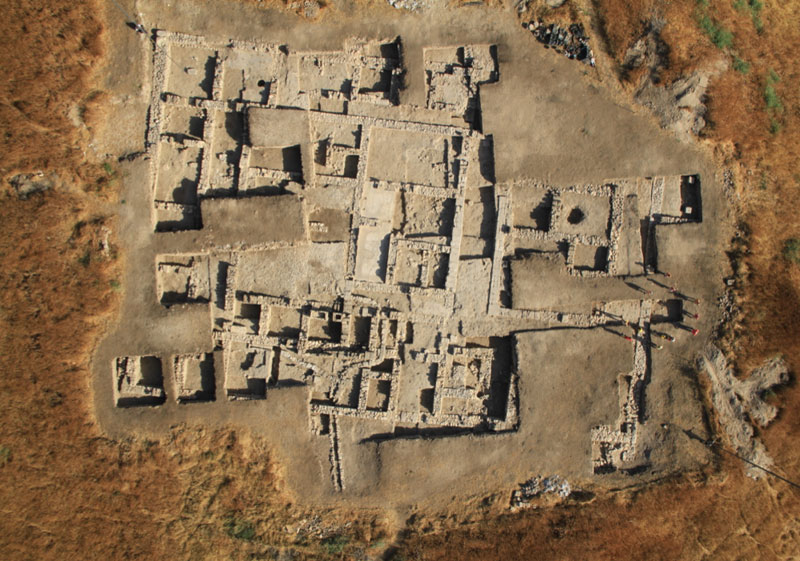Complete article
Tel Kedesh is an enormous mound located in the rural interior of Israel’s Upper Galilee region. It is more than half a mile north to south. It is a double mound, with an upper tell occupied since the Early Bronze Age (3150–2300 B.C.) and a plateau-like lower tell likely constructed in the Middle Bronze Age (2300–1550 B.C.)...
An aerial view shows the immense administrative building constructed around 500 B.C. and used until the 2nd century B.C. as it appeared after more than 10 years of excavation. (Courtesy Pascal Partouche, Skyview Photography, Ltd. We christened this the Hellenistic Administrative Building, on the basis of the granary and the archive, both administrative features.
Digging in the opposing southeastern and northwestern corners revealed that it was one enormous complex. The room next to the northwestern corner had a plastered floor, several wine jars from the Greek island of Rhodes, and 14 huge jars, almost five feet tall each, leaning against the walls. With permission from the Israel Antiquities Authority, we took the broken bottoms of two jars back to the United States for residue analysis and discovered phytoliths—mineral secretions left by plants after they decay—of Triticum aestivum (bread wheat). It was clear that this building had been a storeroom for wine and grain—lots of grain. Each jar held almost 25 gallons, which, once ground into flour, would produce about 150 loaves of bread.
Additional surprises came to light around the corner where we found more than 40 amphoriskoi (small, two-handled flasks) and about 1,500 tiny stamped clay lumps, or bullae. The bullae carry images including those of Greek deities, Seleucid kings, and animals and symbols. They have string holes through the sides and the neat linear impressions of papyrus on the back, both indications that they originally sealed rolled-up papyrus documents. The quantity of bullae in the room indicated that it once housed a sizeable archive. While none of the documents survive, the bullae themselves provide clues about who sent the texts and who officially approved them...
The hundreds of useful objects that were left behind in the building, including more than 20 Rhodian wine jars, continued to confirm that it had been abandoned very quickly. The wine vessels have handles stamped with the names of officials, each of whose tenures can be dated with great accuracy. The latest jars date to 144 or 143 B.C. According to 1 Maccabees 11:63–73, at that time there was a battle in the valley below the Kedesh plateau between the Hasmonean leader Jonathan (the Hasmoneans were a family of high priests and kings who ruled the Jewish state of Judea between 167 and 37 B.C.) and the Seleucid king Demetrius. Jonathan’s forces pursued the Seleucids to Kedesh, killed many, and camped there for several days before leaving for Jerusalem. It appears that the hastily abandoned remains found throughout the building are a result of that battle...

No comments:
Post a Comment